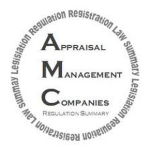In March of this year, I spoke at the Valuation Expo in Orlando. The general topic of my presentation centered on professionalism within the appraisal industry and how individuals can take steps to stand out and rise above the difficulties we see. As a fee appraiser for many years and having recently moved into a compliance manager and review position, I have seen both sides of the struggle to achieve professionalism and excellence in day-to-day appraisal work.
As I closed my talk at the Expo, I shared with the conference the good news that, after years of prohibiting trainees from signing appraisal reports, the Colorado Division of Real Estate had issued guidance on finally allowing trainees to sign as the “appraiser”; the Division’s guidance aligned very well with Fannie Mae’s recent reminder that the GSE has allowed trainees to sign reports for years. My point in the talk was not to boast (although I was overjoyed!) that Colorado trainees and supervisors now had more flexibility in managing their appraisal firms from a training perspective. Rather, my point in sharing the good news was that years of actions by me and other individuals, groups, and companies had finally brought about important CHANGE in our state, which was a main premise of my talk.
As I’ve written before, the Power Of One (one person taking action) is a formidable force – especially when coupled with many other individuals taking action towards the same end. During the question period after my talk, the following day at the conference, and in the months since, appraisers have asked me “What can I do to make necessary changes in my state?” So, let me reiterate several of the main points I presented in March:
Every state is different. Some states’ policies may stem from the law itself, in which case the solution would likely require legislative changes. In other states, the problem may be related to the rules that the real estate division or board have adopted; changes to rules can take time, but are often simpler than changing laws. As I told one participant from the podium, “There is no 10-step process that works in every state to bring change.” Remember, whatever steps are needed to alter your state’s rules or laws will not take days or weeks, but likely months and years.
Reach out to organizations. State coalitions, the National Association of Appraisers, the Appraisal Institute, and other appraiser organizations may have local chapters and contacts who can shed more light on the issue and help to direct your efforts for maximum effectiveness. In my case, the NAA contacted appraisers, management companies, and lenders who wrote letters and emails explaining the need for trainees to participate more fully in the appraisal industry in Colorado; when I approached the State, I was able to share these documents to show it was not simply one appraiser who was concerned about the issue, but rather the larger industry. I owe a big Thank You to the NAA!
Attend state Board meetings. Don’t expect someone else to tell the Appraiser Board or the real estate division that there is a problem. Call, email, and visit the state yourself. In my case, I called and emailed the Board and Division numerous times over a period of over a year, before being encouraged to attend a Board meeting at which time productive discussion took place, including future steps for the state. At one point in the process, I found out about a Board meeting at the last minute, so joined by phone – but only after pulling off the interstate and parking in a hotel parking lot (I was driving to an appraisal appointment at the time). Bottom line, commit at least some time to getting personally involved, and get to know the employees and Board members in your state.
Join a professional organization. Ask fellow appraisers about their experiences with specific appraiser organizations. Costs of membership vary from one organization to another, so research the cost. Contact the local, regional, and national leaders of the organization or coalition. Determine what the organization has done to affect the appraisal industry positively. Truly, supporting appraiser groups ensures that appraisers’ interests are being bolstered behind the scenes on a continuing basis, even as you go about your daily work.
Ask questions and network. As you attend conferences and other events – whether locally, regionally, or nationally – get to know people. Seek out your state regulators and Board members, long-time experienced appraisers, representatives from agencies and the GSEs, current and former Board members, individuals who participate in appraisal organizations, and other knowledgeable participants in related industries such as bankers, real estate agents, and lenders. Who better to hear the rationale behind current policies than many of the people on the front lines? Communication with others – and encouraging the continued distribution of accurate information – helps to strengthen you and your peers’ knowledge base.
I was certainly not the only person responsible for “victory” in allowing trainees to sign reports in Colorado. However, it was through the steps above that I ensured my years-long activities were united with many other individuals’ and organizations’ efforts to bring about the change our state needed. As I shared at the Valuation Expo: “If you want a voice, you need to make sure you’re saying something. So… what are you saying?”
Joshua Walitt, SRA, MNAA is the Compliance Manager for Property Interlink, an appraisal firm and management company. He oversees procedures, training, licensing, audit, appraiser independence, and review functions. He is currently a Director on the Board for the National Association of Appraisers (www.naappraisers.org). Prior to joining Property Interlink, he provided fee appraisal and consultation services to lenders, attorneys, management companies, and private parties. In 2013, he was the appraiser member of Colorado’s AMC Rulemaking Taskforce. Walitt designed the Market Machine in 2015, a market analysis and regression modeling tool used by appraisers throughout the U.S.. He also provides valuation consulting for international applications. He writes for industry publications, designs and presents education courses, served as a valuation hearing officer, and speaks at regional, national, and client conferences. Contact: linkedin.com/in/joshuawalitt





